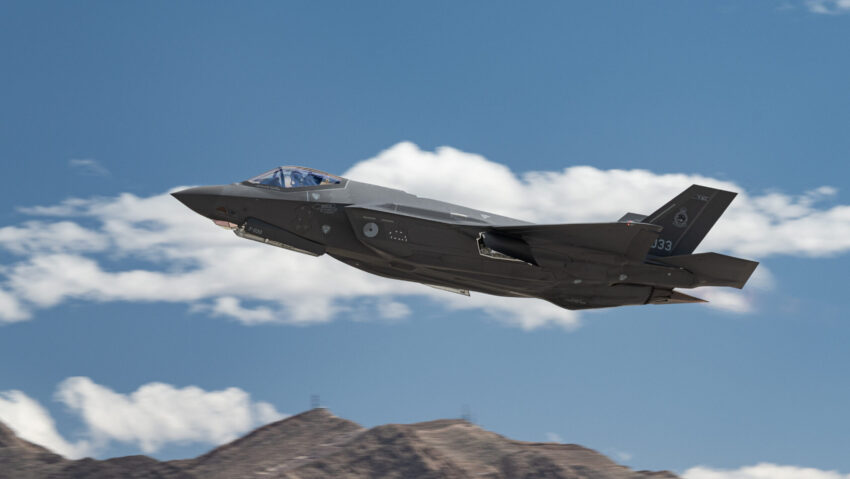A Royal Netherlands Air Force F-35A takes off for Red Flag-Nellis 24-2 mission at Nellis AFB, Nevada, March 13, 2024. (USAF)
BELFAST — NATO should “fully assess and understand the shortfalls within the alliance” that would emerge if the US decides to move key assets from Europe to the Pacific or elsewhere, the Netherlands’ top air force official said today, in a tacit acknowledgement that US forces are likely to redeploy from the continent in the future.
Lt. Gen. André Steur, Commander of the Royal Netherlands Air and Space Force, made the recommendation during a speech at the Global Air Chiefs Conference in London today.
“[C]urrent shortfalls within the alliance will significantly worsen if the US needs to focus more and more on current and future developments in the Indo-Pacific,” said Steur, as he also called for a “thorough look” into NATO Defence Planning Process targets, especially “investments” in command and control capabilities, cyber systems, fifth-generation combat jets, Intelligence, Surveillance and Reconnaissance (ISR), long range fires and tankers.
“Above all, deep pockets filled with ammunition,” is required, he noted, “because numbers do matter in the world we live in.”
To make up for equipment that could be pulled by the US in support of European needs, replacement kit including 400 fighter jets, 20 destroyers, 24 surface-to-air missile batteries, 10 nuclear powered attack submarines, 600 main battle tanks, 800 tracked infantry fighting vehicles, 200 attack helicopters and other high end weapon systems would need to be acquired, according to analysis [PDF] from the UK based International Institute for Strategic Studies (IISS) think tank.
Steur’s comments come amid NATO allies agreeing to a 5 percent GDP spending target, the result of pressure from President Donald Trump on European nations to do more for their own security, amid transatlantic tension over Washington’s reliability as an ally. Adding to Europe’s sense of uncertainty, US Ambassador to NATO Matthew Whitaker reportedly said in May that talks about removing tens of thousands of American troops from the continent would start “later this year.”
At an operational level, Steur also said that the alliance “should refrain from just focusing on building fortress Europe” by building up forces and war materials in the Eastern flank, because continuing to do so risks losing “agility and flexibility” when executing future conflicts.
To counter the problem, he emphasized the need to “stay unpredictable and preserve the ability to strike anytime, anywhere, just in case the RF [Russian Federation] doesn’t invade the Baltics, but somewhere else.”
Appearing to press home the threat of Russia, he shared, “[O]f course I do understand that we have to deal with the crocodile closest to the canoe first. But what if Jaws is appearing on the horizon? Shouldn’t that be on our European radars as well?”
He said that a future need to “support allied efforts” in Africa, the Indo-Pacific or the Middle East, merits “a balanced set of forces that can secure the alliance but [can] fight evil worldwide.”
What “worries the heck out of me” said Steur, is the lack of attention related to NATO’s “360 degrees” warfighting approach, as he also argued in favor of the “need to strengthen our air power capabilities across the board to live up to our collective responsibilities.”
Click this link for the original source of this article.
Author: Tim Martin
This content is courtesy of, and owned and copyrighted by, https://breakingdefense.com and its author. This content is made available by use of the public RSS feed offered by the host site and is used for educational purposes only. If you are the author or represent the host site and would like this content removed now and in the future, please contact USSANews.com using the email address in the Contact page found in the website menu.








